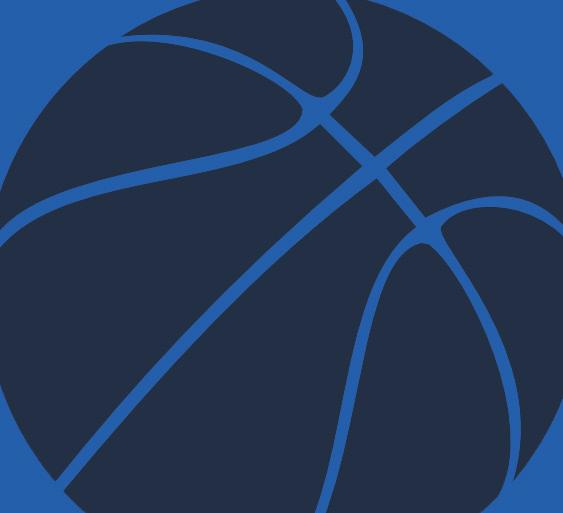
3 minute read
The madness begins- Caleb Hiatt
from March Issue 2020
BEGINS
BY CALEB HIATT
Advertisement
As the month progresses, we get closer to the NCAA Division One Men’s Basketball tournament known as March Madness.
March Madness is a tournament of 68 college basketball teams that fi ght for the national title. Eight teams have a play-in game where they compete for their place in the fi eld of 64. The bracket is divided into four regions, each with teams seeded one through 16. In each region, the one seed plays the 16 seed, the two seed plays the 15, the three seed plays the 14 and so on. March Madness is a meaningful season of the year for sports buff s. They get to see how their teams perform and how accurate they were with their predictions. While March Madness is vital to sports fanatics, it can also be entertaining to everyone who creates a bracket full of their predictions. Anyone has a decent chance at winning their group due to the overwhelming uncertainty and seemingly infi nite number of outcomes that come with the tournament. The tournament is so unforeseeable that it is nearly impossible to predict what will happen. No one has ever created a perfect bracket.
According to the NCAA, the record was set last year at 49 correct predictions before failing in the 50th game. LHS math teacher Jared Jansen and LHS science teacher James “Jaws” Jarovski are two of the biggest sports enthusiasts at LHS and have been making March Madness brackets for years. Even for them, winning does not come easy.
“I know that I’ve won relatively bigtime money twice since I’ve been [at LHS],” said Jaws. “That’s two out of 20 times, which is not a lot. It’s a lot of luck too.”
Even being veteran bracket predictors, Jaws and Jansen still have a tough time winning their groups. They both have certain strategies that they use when predicting outcomes. The tactics that they use are based on watching a lot of basketball games before the tournament, but it is diffi cult to watch every team play. So when Jansen is unsure, he reverts to his childish side knowing he has just as good of chance of getting it right as if he used a more complex strategy. “If I’ve seen the teams play then I’ll try to pick who I think is better,” said Jansen. “But if I don’t know who to pick, then I’ll go with who has the better mascot. It’s a little kid strategy.” While Jansen resorts to an unsophisticated approach in times of indecision, Jaws typically shoots for a more enlightened scheme.
“If they have an elite level player, like a Zion Williamson, they usually tend to win the questionable games,” said Jaws. “Stars usually win for me, like Ja Morant last year.”
The tournament is known for its unpredictability as well as its surprising amount of upsets. Year

after year, picking upsets proves to be the hardest part about predicting the tournament. Jansen and Jaws use similar methods when choosing their upsets.
“I know there is always going to be one 12/fi ve upset,” said Jansen. “I try not to do too many that are 13 seeds and above, even though they do happen, they happen less frequently so I try to stay away from them.”
Bracket competitions are widely popular among people of all ages, whether they involve a prize or are just for fun. Some LHS teachers have friendly bracket competitions among their classes in which students can receive small prizes as a reward for winning.
“Everybody fi lls out a bracket in all fi ve of my classes,” said Jansen. “It’s mandatory ... The winner of each class gets extra credit and the overall winner gets extra-extra credit and a candy bar.”
For those in need of extra credit or those who just really aspire to win their bracket group, I suggest noting some of the same guidelines used by Jansen and Jaws. In addition to previous advice provided by the two LHS teachers, they also recommend including Gonzaga and Baylor in the fi nal four. They believe that Gonzaga is the most plausible champion, but other strong predictions include Baylor, Maryland, San Diego State and Duke.










